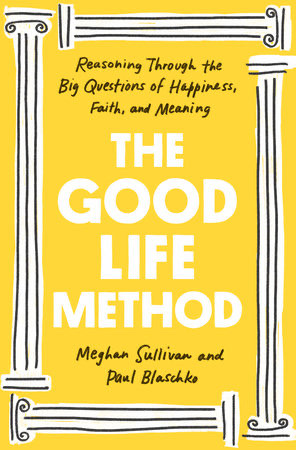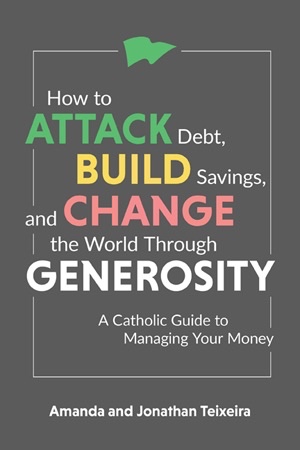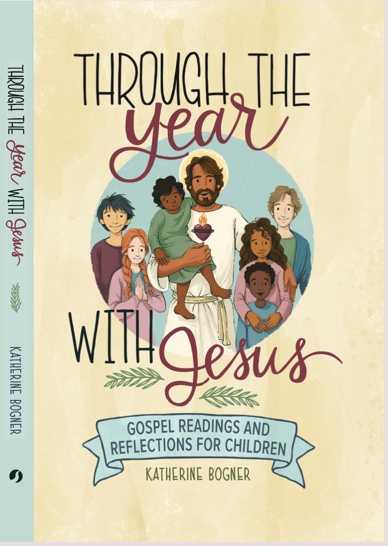This is my column that appears in this week’s print edition of The Catholic Post. I invite your feedback!
What is “The Good Life”?
Everyone wants to live a good, happy life. How we get there, and how we live this out, can be a point of disagreement. How do we resolve that?
For instance, in popular culture, there’s often an argument made for something—and I think, “that’s not quite right” or “that’s completely wrong.” But most often I can’t explain the “why” of its faulty thinking.
That’s why I loved The Good Life Method: Reasoning Through the Big Questions of Happiness, Faith, and Meaning by Meghan Sullivan and Paul Blaschko. The book is based on the enormously popular course, “God and the Good Life,” the two teach at the University of Notre Dame.
Note that the word “philosophy” (wisely) does not appear in the title of the book. The subject can be intimidating and off-putting for some readers (like me!) who don’t perceive that they have an aptitude for philosophy. But “The Good Life Method”— in an engaging, enjoyable style—explains these philosophers and philosophical concepts with down-to-earth explanations and real-life examples.
“We need philosophical coaching. Socrates, Plato, Aristotle, the Stoics, Saint Thomas Aquinas —..have all worked out proven methods for bringing direction to tumultuous lives,” Sullivan and Blaschko write. “It is shocking how vibrant and relevant this time-tested guides still are today.”
Virtue Ethics Contrasted With Other Philosophies
The “Good Life Method” focuses chiefly on virtue ethics. This is the idea—laid out by ancient Greek philosopher Aristotle—that begins with the premise living a happy life involves virtues, or good habits and good character.
What’s helpful about the book is how it contrasts virtue ethics with other types of popular philosophical approaches—for instance, consequentialism. Consequentialism posits that the effect of what you do is more important than why you do it—basically, “the ends justify the means.” Consequentialism is incompatible with Catholic reasoning.
One example: when describing how consequentialist philosophers are skeptical of emotions in decision-making (one even wrote a book called “Against Empathy”), Sullivan & Blaschko contrast this with virtue ethics:
“Virtue ethicists…think we should be skeptical of any moral advice that is incapable of appropriately connecting to our emotional lives…. The philosophical heart of virtue ethics is that in the best situation we should want our feelings and actions to line up.”
“The Good Life Method”
The book is divided into two sections: The Good Life, and God and the Good Life.
In the first section, “The Good Life,” Sullivan and Blaschko cover the elements necessary for a good life: desiring truth, living generously, taking responsibility; working with integrity, and loving attentively. Each chapter covers one of these concepts, with relevant explanations of different philosophical principles and what they mean.
The second section, “God and the Good Life,” covers why it is important to consider questions of faith—philosophy about the concept of God; how faith develops; the problem of evil or suffering; purpose for those with faith; and preparing for death (or memento mori).
In parts of these “God” chapters, Sullivan and Blaschko share their faith journeys, one as a college-age convert, one as a cradle Catholic who struggled. They also share how Catholic faith is a critical component of their “good life method.” But since the class is taught to students of all faiths or no faith, the book is written and would be valuable for anyone to read, since it helps readers ask the “big questions” and reflect on them.
At the end of each chapter are “craft” reflection questions and prompts to foster deep thought and discussion. For instance, in the chapter on generosity, it’s titled “Soulcraft: Invest to Flourish.” In the chapter on work, it’s titled “Workcraft: Telling Your Work Story.”
Four Skills Needed to Form a “Philosophy of Life” and Write Your Own “Apology”
The book focuses on the four chief skills needed in forming a “philosophy of life” — asking strong (i.e., meaningful, deep) questions; having agency or control over your life; loving attention; and making meaning of our lives.
The goal of the book is for each reader to develop a “Philosophical Apology” which is part philosophical argument, part personal narrative, part map to the good life.
“It’s a goal-planning document on steroids,” they write.
The “apology” is not just a to-do list, but an exploration and explanation of values, hopes, and reasoning.
“Learning how to tell the true story, and becoming disciplined enough to do it, is how we develop the skill of personal agency,” Sullivan and Blaschko write. “It’s how we learn to take responsibility for our actions.”
Book Bonus: Learning About Renegade Philosophers
A bonus for me in reading “The Good Life Method” was learning more about the 20th century British philosopher Elizabeth Anscombe, one of the “Oxford women.” These female philosophers became influential during and after World War II. She was a devout Catholic and mother of seven, tireless intellectual, and outspoken feminist. Sullivan and Blaschko tell this remarkable story (and other stories) about her:
“Anscombe was stopped at the door of a Boston restaurant where she was told that women wearing parts were not allowed to enter. So, without missing a beat, she took her pants off.”
And the chapter “Take Responsibility,” begins with this “mic drop” quote from an essay Anscombe wrote:
“Principles that are mistakenly high and strict are a trap; they may easily lead in the end directly or indirectly to the justification of monstrous things.”
-Philosopher Elizabeth Anscombe
Why Pursue “The Good Life”?
A quote from the last section of the book seems appropriate to describe why everyone—not just college students or professional thinkers—should understand and implement a philosophical approach to life, with excellent help from “The Good Life Method”:
“Having a vision of the good life—a philosophical theory of what you are aiming at—is not crazy, impossible, or impractical. It is one of the most practical exercises we an understand, since your philosophical views can help you make all of the other very difficult decisions you face.”
Meghan Sullivan & Paul Blaschko in “The Good Life Method”
For those who don’t have a natural knack for understanding philosophy, “The Good Life Method” is a clear and highly accessible “translation” of these concepts, with practical application to everyday life.




